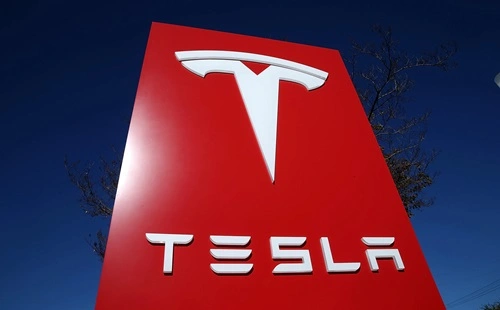Tesla Inc. faces a complex landscape marked by financial challenges, strategic initiatives, and market dynamics. In 2024, the company reported a 53% decline in net income, totaling $7.1 billion, with revenues remaining relatively flat at $97.7 billion. The automotive segment experienced a 6% decrease in revenue, while the energy generation and storage division nearly doubled its income to $10.1 billion.
Tesla’s stock has declined approximately 31.5% since its peak in December 2024, influenced by underwhelming financial results and CEO Elon Musk’s political engagements, which have sparked consumer backlash, particularly in Europe.
Strategically, Tesla is advancing its autonomous driving technology, unveiling the ‘Cybercab’, an AI-powered robotaxi, with production anticipated by 2026. The company also plans to introduce more affordable electric vehicles in early 2025, aiming to broaden its market reach.
Despite these efforts, Tesla faces intensified competition from rivals such as China’s BYD and challenges stemming from reduced subsidies in key markets. The company’s future performance will hinge on its ability to navigate these obstacles while capitalizing on its technological innovations this page contains the detailed SWOT Analysis of Tesla Inc., so let’s move ahead.
Strengths
- Market Leadership in EVs: Tesla’s Model Y and Model 3 continued to dominate the U.S. EV market in 2024, collectively accounting for over 40% of total EV sales.This strong market presence underscores Tesla’s brand strength and consumer preference for its vehicles.
- Innovative Product Launches: In October 2024, Tesla unveiled the Cybercab, a fully autonomous electric vehicle designed for ride-hailing services. The Cybercab, also known as the Robotaxi, is a two-passenger car without a steering wheel or pedals, reflecting Tesla’s commitment to pioneering autonomous transportation.
- Expansion in Energy Storage: Tesla’s energy storage deployments reached 31.4 GWh in 2024, indicating significant growth in its energy division. This expansion aligns with the company’s mission to accelerate the world’s transition to sustainable energy.
Weaknesses
- Decline in Vehicle Sales: Despite its market leadership, Tesla experienced a 6% decline in battery electric vehicle (BEV) sales in the U.S. during 2024. This downturn contrasts with the overall growth in the EV market and suggests challenges in maintaining sales momentum amid increasing competition.
- Profit Margin Pressures: In the first quarter of 2024, Tesla reported a decrease in gross margin to 17.4%, impacted by reduced vehicle average selling prices and increased operating expenses. This decline highlights the financial pressures associated with scaling operations and maintaining competitive pricing.
- Production Challenges: Tesla faced production challenges with the Cybertruck, leading to the offering of discounts up to $2,600 and the reassignment of workers to Model Y production lines. These measures suggest difficulties in meeting production targets and maintaining demand for new models.
Opportunities
- Growth in Global EV Adoption: The global shift towards electric mobility continues to present significant growth opportunities. In 2024, nearly 20% of new car sales in the U.S. were electric, up from 4% in 2019. Tesla’s established brand and infrastructure position it well to capitalize on this expanding market.
- Expansion in China: Tesla launched a redesigned Model Y in China in January 2025, featuring an updated exterior and extended driving range. Priced at 263,500 yuan ($35,900), this model aims to reclaim market share lost to local competitors and tap into the growing Chinese EV market.
- Advancements in Autonomous Technology: Tesla’s introduction of the Cybercab reflects its advancements in autonomous vehicle technology. The development of fully autonomous vehicles for ride-hailing services presents new revenue streams and aligns with future transportation trends.
Threats
- Intensifying Competition: The EV market is becoming increasingly competitive, with traditional automakers and new entrants launching electric models. For instance, the Volkswagen ID. Buzz, the first all-electric minivan in the U.S., has reshaped perceptions of EVs, indicating a diversifying market landscape.
- Regulatory and Political Uncertainties: Changes in government policies and incentives can impact EV adoption rates. Potential reductions in EV incentives under new administrations pose risks to sales growth, necessitating strategic adaptability.
- Supply Chain Disruptions: Reliance on global supply chains for critical components exposes Tesla to risks associated with geopolitical tensions, trade restrictions, and logistical challenges. Ensuring a resilient supply chain is essential to maintain production stability.
Conclusion
In 2025, Tesla Inc. continues to be a formidable force in the electric vehicle industry, leveraging its strengths in market leadership, innovation, and energy solutions. However, the company faces challenges, including declining sales, margin pressures, and production hurdles. By capitalizing on opportunities in global EV adoption, expanding in key markets like China, and advancing autonomous technologies, Tesla can navigate the competitive landscape. Addressing threats such as intensifying competition, regulatory uncertainties, and supply chain disruptions will be crucial for sustaining its leadership and achieving long-term growth.
Anantha Nageswaran is the chief editor and writer at TheBusinessBlaze.com. He specialises in business, finance, insurance, loan investment topics. With a strong background in business-finance and a passion for demystifying complex concepts, Anantha brings a unique perspective to his writing.



